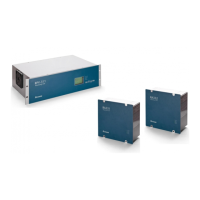Chapter 9 – TW Fault Locator
2 TWFL OVERVIEW
The figure below shows an overview of the Traveling Wave Fault Location architecture.
Figure 72 – TW Fault Locator architecture overview
Each terminal of the line has to have a set of RPV311 processing unit+RA333 acquisition unit ; and each
RPV311 has to be synchronized with a GPS Clock as accurate as possible. The signal used to extract the
traveling waves if the voltage signal from the secondary circuitry of the VT.
During a fault the RPV311 in each terminal will register the waveform of the traveling wave in a COMTRADE
file, after being triggered by any of the thresholds described in Chapter 4 - Thresholds.
The COMTRADE files of both ends of the line have to be downloaded to a computer ,where the software TW
Fault Locator (present in RPVTools) will run the files and calculate the distance of the fault. The Chapter
Chapter 12, item 2.4 - TW Fault Locator described the procedure to utilize the software.
The RPV from one terminal does not need to communicate with the other terminal’s RPV in order to create
the TW COMTRADE file.
A communication link is only needed between the control centers and the RPVs (or local data concentrators)
the user wants to implement remote access to the equipment.
The communication setup that the user would deploy to download the TW record and perform the fault
location is exactly the same as the one used to download the fault records.
The fault distance is calculated based on the time that each wavefront arrived at the line terminal. According
to the following equation.

